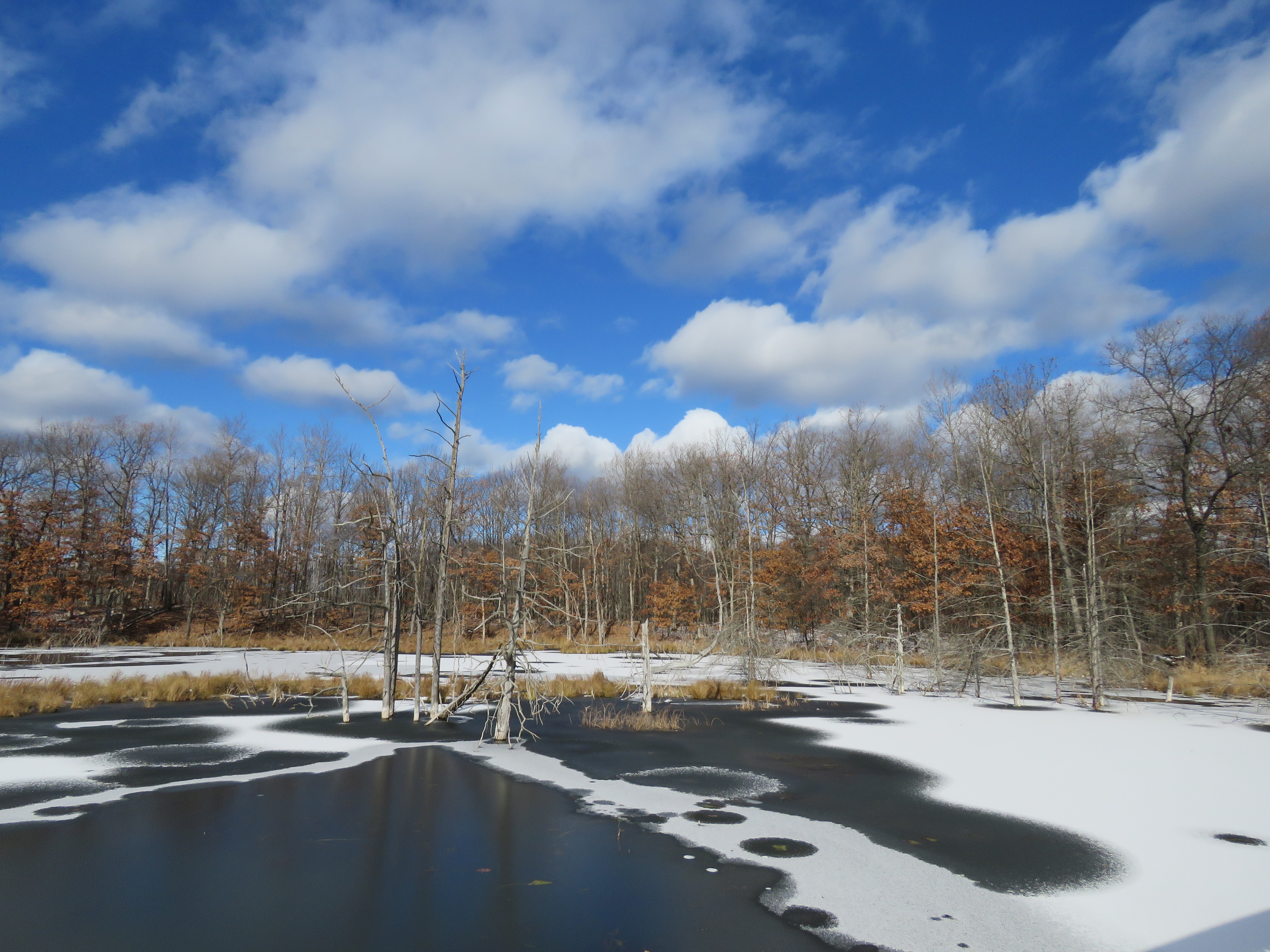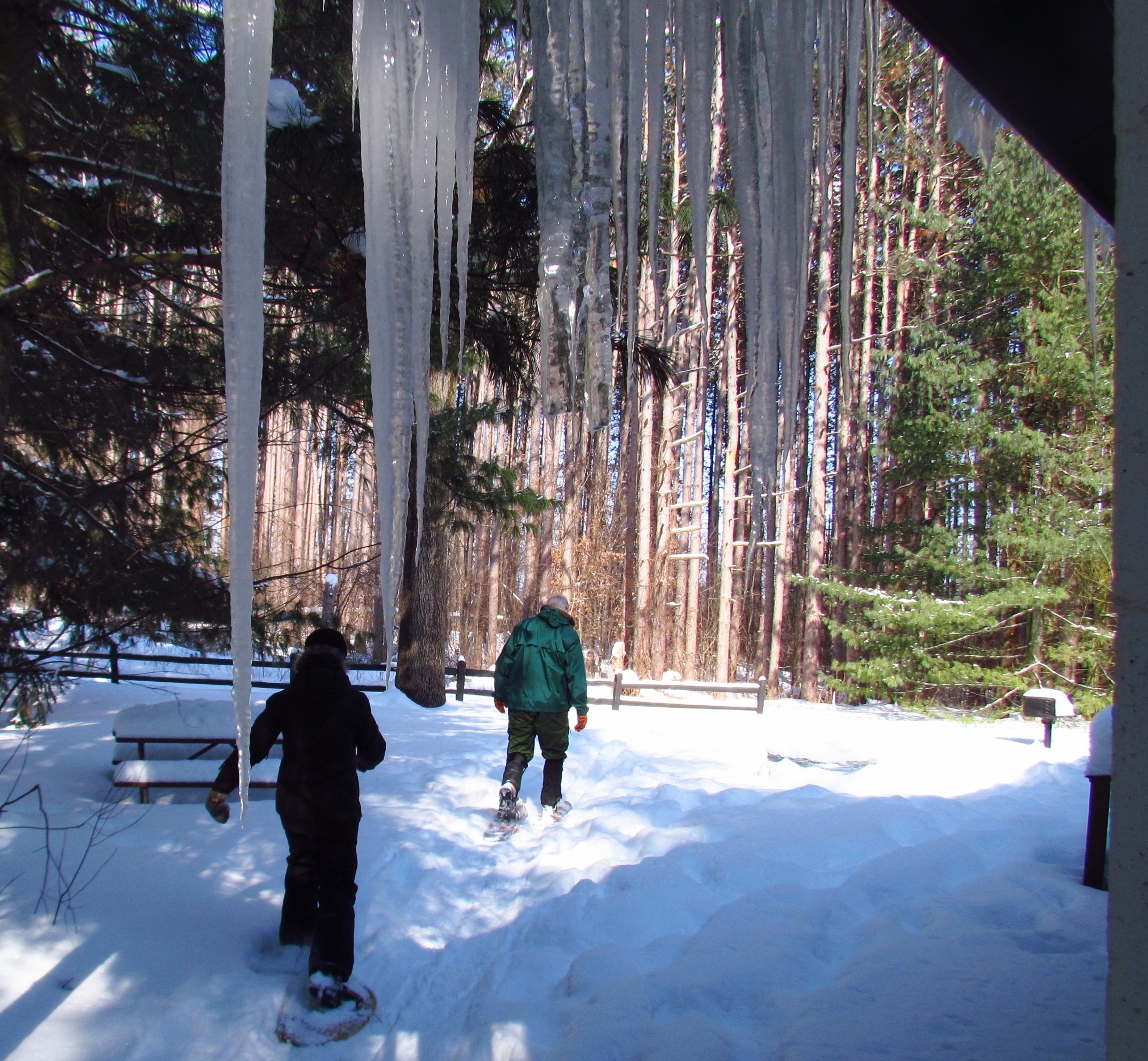Winter hiking, snowshoeing and cross-country skiing on the Wilder Side of Oakland County might best be described with just two words: Pure Pleasure. Tracks in fresh snow present an enticing storybook of wildlife activity. Cooper’s Hawks zip through woodlands. Turkeys share trails we trek, and the musical whispers of winter are enlivened by Black-capped Chickadees and White-breasted Nuthatches. A fleeting view of a mink by a frozen marsh, an eastern coyote or red fox slipping silently through the woodlands falls into the realm of possibility for those that walk slowly, stop often, lean motionlessly against a tree and then just look and listen.


In winter, however, the margins of allowable trail errors shrink rapidly, and small mistakes or minor mishaps can be unforgiving. Slip and snap an ankle an hour before dark without having adequate clothes for the unexpected delay and suddenly hypothermia becomes a clear and present danger. The National Outdoor Leadership School defines hypothermia this way, “A lowering of the core body temperature that occurs when heat loss exceeds heat production.” Hypothermia is the number one killer of outdoor recreationists and often begins with mumbling, stumbling, uncontrollable shivering, fatigue, mental confusion and poor decision-making. Knowing the basics of first aid and symptoms of cold-weather maladies, especially hypothermia, is just common sense.


SITUATIONAL AWARENESS: Know both the environmental conditions and your own abilities before setting out on a winter adventure, even if it’s just for a one-hour trek in the woods. I’ve made my share of mistakes on trails and have learned from them. Six years ago on a warm day in May, I had my moment of enlightenment in a crusty snow field near the 12,000-foot elevation mark in the mountains above Santé Fe. The problem? I wore hiking shorts and never expected to encounter deep snow. The embarrassing part? I had just completed a three-day seminar with the Wilderness Medical Society about trail safety in the mountains and situational awareness and the hike was my spring day celebration. Fortunately, I had my compass, a topographical map, and a day sack full of survival goodies and made a safe detour back to base camp without frostbite or further mishaps. My lesson learned? I should have checked trail conditions first at the ranger station.

ICE SAFETY: Of paramount importance this winter is the heavy snow that blanketed Oakland County last Sunday. Snow is an excellent insulator and that means the extremely thin ice that was covered by snow will remain dangerously thin on our lakes for a long time. The Oakland County Sheriff’s Office and the Michigan Department of Natural Resources remind us that that there is no such thing as 100% safe ice. It is not possible to judge the strength of ice just by its appearance, age, thickness, temperature, or whether or not the ice is covered with snow. Just because you see someone on ice does not mean its safe.

JEANS: Never wear jeans. Cotton, including denim jeans, transfers moisture to your skin when wet and cotton won’t keep you warm when wet. Many excellent outdoor adventure companies offer a wide range of clothing alternatives for winter hikers. My favorites include RailRiders, Backcountry and Mountain Gear. Moosejaw and REI have retail outlets in Oakland County with knowledgeable, helpful sales staff, as well.

SNEAKERS: Coyotes tread “barefoot” through Oakland County and their paws do not get cold. We are not coyotes. We are poorly adapted to winter without compensating for our inadequacies and one critical item used to compensate is good footwear. Never wear sneakers! Quality boots designed for winter hiking with plenty of room for midweight or heavy “SmartWool” socks and toe wiggle room are the way to go.

STAYING WARM: Listen to mom. Wear your hat. Layering is a must for a winter hike, cross-country skiing or snowshoeing. Your best bet is to start with wicking underwear for your tops and bottoms. The wicking layer removes perspiration from your skin. Some jump right to an outer layer, a breathable and waterproof fabric such as the all-time favorite Gore-Tex. Others use a middle layer made of fleece or other synthetic fibers. Wool is a favorite of many and retains its insulation ability when wet. And the beauty of layering is you can add or remove layers to remain comfortable, and that means having a small day pack for the clothes, and your emergency essentials.

TRAIL TIPS: Travel with a companion and make informed decisions based on facts, not assumptions. A companion can give a hand and help overcome trail difficulties. If hiking off-trail alone, let someone know where you went. If no one knows you are missing, no one will look for you. Don’t ever depend solely on your smartphone and technology to get you ‘there and back’ safely. The route it shows may be wrought with hazards or plot you over thin ice. Bring a map and a compass and know how to use both of them. ALWAYS carry a small day pack in winter with essentials, including snacks and an emergency whistle. My winter day pack has enough for an unexpected night out. I might be cold and miserable at sunrise, but I would have the ability to get a fire going and stay dry all night in an emergency shelter and have food to eat. Food fuels survival.



GET INFORMED, then go outdoors and have winter fun on the Wilder Side of Oakland County and perhaps follow the advice of the Government of Canada in their excellent winter-savvy “AdventureSmart” program. They know winter!
Jonathan Schechter is a naturalist and nature education writer for Oakland County Government and blogs about nature’s way on the Wilder Side of Oakland County.
Follow along with Oakland County on Facebook, Instagram, LinkedIn, Pinterest, Twitter, and YouTube using #OaklandCounty, or visit our website for news and events year-round.

